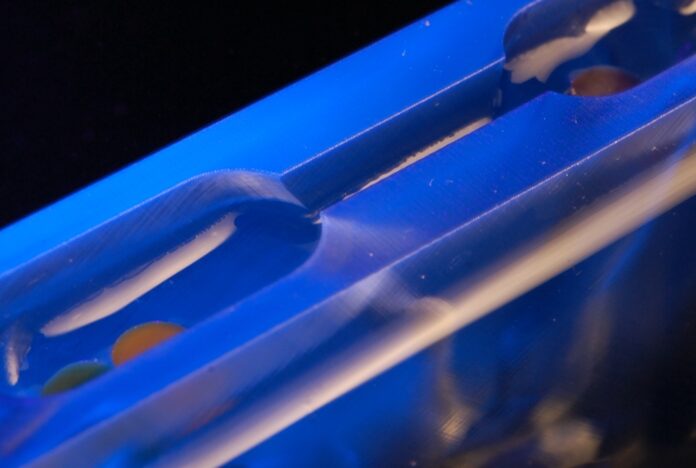To produce the next generation of high-frequency antennae for 5G, 6G and other wireless devices, a team at the Harvard John A. Paulson School of Engineering and Applied Sciences (SEAS) has invented the machine and manufacturing technique to manipulate microscopic objects using 3D printing and braid them into filaments a mere micrometre in diameter.
How small is this? One human hair varies in diameter between 20 and 200 micrometres from tip to root. Spider web silk can vary from 3 to 8 micrometres in diameter. So that’s teeny tiny. And for us to pack in the many antennae that go into mobile phone technology today, the smaller the better.
Current manufacturing techniques can’t make one-micrometre filaments. But the machine invented by the Harvard SEAS team can. How does it do it? It uses the surface tension of water to grab and manipulate micromaterials. The capillary forces in the water are harnessed to help in the assembly using the variable width channels contained within the machine. Using 3D printing and the hydrophilic properties of the machine’s walls, the team used surface tension to guide kevlar nanowires attached to small floats which as they travelled through the device plaited into micrometre-scale braids.
On October 26, 2022, Nature published an article describing their invention. States Ahmed Sherif, a Ph.D. student at SEAS and one of the co-authors of the published paper, “The amazing thing about surface tension is that it produces forces that are gentle enough to grab tiny objects, even with a machine big enough to fit in your hand.”
The technology may become the standard for nanoscopic manufacturing in the near future. It’s inexpensive and easy to make. Previous nanomanufacturing methods used laser tweezers. But the SEAS invention uses a tank of water and a commonly used 3D printer. For a demonstration watch this video.
What does the machine look like? It is a very simple-looking piece of 3D-printed plastic about the size of a standard Nintendo game cartridge. Its interior has carved channels of varying widths from wide to narrow. The channels intersect. The plastic used is hydrophilic which means it attracts water. When a millimetre-sized piece of floating plastic is placed within the device and then immersed the water’s surface tension repels the plastic. When two plastic floats are put in the device with attached microscopic fibres they move through the interior following the variable width channels which causes them to twist around each other. Add a third float and the fibres plait into braids that are ten times smaller than a single human hair.
States Vinothan Manoharan, Professor of Chemical Engineering and Physics at SEAS, and senior author of the paper, “our work offers a potentially inexpensive way to manufacture microstructured and possibly nanostructured materials.”
For high-frequency electronics manufacturers, this could prove to be a game-changer.









